#automation vs manual testing
Explore tagged Tumblr posts
Text
Automation Testing vs. Manual Testing: Which approach is best for your project? Discover the key differences, benefits, and scenarios where each shines. Learn how to leverage both to ensure top-notch software quality and performance. Dive into our latest blog to make an informed choice! 🚀 #AutomationTesting #ManualTesting #SoftwareQuality #TechInsights
0 notes
Text
#automation testing#manual vs automation#automation vs manual#manual testing#software testing services
2 notes
·
View notes
Text
Rethinking Manual Testing: Exploring Real Value
A human thinking effort that is lost in mundane, repetitive work is basically marginal value, creating toxic cycles during your so called manual testing effort. The word “manual” in manual testing is misleading. Every testing effort needs a tool. Ex: To document your tests you need an Excel sheet or a tool like Jira. If I would use the word manual, I would mean thinking or I would just call it…
#automation testing vs manual testing#cognitive biases and heuristics#cognitive biases examples#cognitive biases in decision making#software test tools
0 notes
Text
Automated Testing vs. Manual Testing: Which One is Right for Your Project?

Achieving high-quality, reliable software stands as a fundamental requirement in software development. Successful testing functions as an essential tool to discover faults and build performance capabilities that create better user experience outcomes. Two main testing methods dominate the field: automated testing and manual testing. The process of quality software assurance uses different testing approaches that demonstrate their own advantages as well as weaknesses according to specific project requirements and scenarios. We will explore the specifics to determine which testing process works best for your system development efforts.
1. What Is Manual Testing?

Manual testing involves a human tester manually executing test cases without using automation tools. Key Characteristics:
The methodology focuses its efforts on user interface together with usability and experience testing.
Human-centered applications where selection requires discretion include ad hoc testing and enumerative testing as well as examinations that need human evaluation.
Human performers are required during this approach; thus, it demands substantial time.
2. What Is Automated Testing?
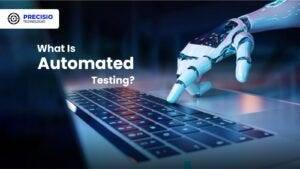
Software performing automated testing executes test cases through workflows and helpers. Key Characteristics:
Efficient for repetitive and regression testing.
Users must spend money on tools along with developing custom scripts for testing.
Reduces human error.
3. Advantages of Manual Testing

Human Intuition: Software testing professionals can detect kernels through their human cognitive ability that automated tools cannot match. The observation and evaluation of visual elements runs more efficiently through human operatives instead of advanced tools.
Flexibility: This method suits exploratory testing specifically because there are no pre-determined scripts available.
Low Initial Investment: Running this approach does not need tool purchases or applications to develop automation frameworks.
Adaptable for UI/UX Testing: Running this approach does not need tool purchases or applications to develop automation frameworks.
4. Advantages of Automated Testing
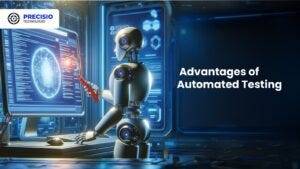
Speed: Executes repetitive tests much faster than humans.
Scalability: The system proves most effective for extensive projects that need constant system updates.
Accuracy: When performing recurring actions, automated systems minimize the chances of human mistakes.
Cost-Efficient in the Long Run: Once established and implemented, the system demands costly investments but ensures continuous development expenses decrease over time.
Better for CI/CD Pipelines:��Such testing technology connects various development pipelines that support agile and DevOps methodologies.
5. Disadvantages of Manual Testing

Time-Consuming: The manual performance of repeated tests leads to delayed completion of projects.
Error-Prone: Large applications contain tiny bugs that human testers commonly fail to detect.
Not Ideal for Scalability: The process of increasing manual testing needs additional testers to avoid cost escalations.
6. Disadvantages of Automated Testing
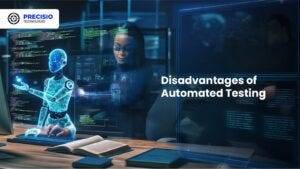
Initial Costs: Organizations must provide high financial resources to procure testing tools together with developing programming constructs.
Limited to Pre-Defined Scenarios: These testing approaches work poorly for handling exploratory or ad hoc testing.
Requires Maintenance: Test scripts need frequent updates when application changes occur.
Not Suitable for UI/UX Testing: Struggles with subjective user experience evaluations.
7. When to Use Manual Testing
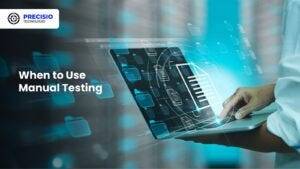
Small Projects: The testing method proves beneficial at a low cost for small applications and provides quick assessments.
Exploratory Testing: Testing this approach benefits projects whose scripts have not been defined yet or need evaluation for newly added features.
Visual and Usability Testing: Performing assessments on interface components together with design features.
8. When to Use Automated Testing
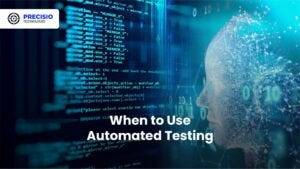
Large Projects: Handles scalability for projects with frequent updates.
Regression Testing: Program testing becomes more efficient through automation since automated assessments perform multiple tests following each update process.
Performance Testing: The system performs efficient capabilities to conduct load testing and stress testing.
Continuous Development Environments: Agile progression and DevOps implementations need automation as a core requirement.
READ MORE- https://www.precisio.tech/automated-testing-vs-manual-testing-which-one-is-right-for-your-project/
2 notes
·
View notes
Text
Which is better full stack development or testing?

Full Stack Development vs Software Testing: Which Career Path is Right for You?
In today’s rapidly evolving IT industry, choosing the right career path can be challenging. Two popular options are Full Stack Development and Software Testing. Both of these fields offer unique opportunities and cater to different skill sets, making it essential to assess which one aligns better with your interests, goals, and long-term career aspirations.
At FirstBit Solutions, we take pride in offering a premium quality of teaching, with expert-led courses designed to provide real-world skills. Our goal is to help you know, no matter which path you choose. Whether you’re interested in development or testing, our 100% unlimited placement call guarantee ensures ample job opportunities. In this answer, we’ll explore both career paths to help you make an informed decision.
Understanding Full Stack Development
What is Full Stack Development?
Full Stack Development involves working on both the front-end (client-side) and back-end (server-side) of web applications. Full stack developers handle everything from designing the user interface (UI) to managing databases and server logic. They are versatile professionals who can oversee a project from start to finish.
Key Skills Required for Full Stack Development
To become a full stack developer, you need a diverse set of skills, including:
Front-End Technologies: HTML, CSS, and JavaScript are the fundamental building blocks of web development. Additionally, proficiency in front-end frameworks like React, Angular, or Vue.js is crucial for creating dynamic and responsive web interfaces.
Back-End Technologies: Understanding back-end programming languages like Node.js, Python, Ruby, Java, or PHP is essential for server-side development. Additionally, knowledge of frameworks like Express.js, Django, or Spring can help streamline development processes.
Databases: Full stack developers must know how to work with both SQL (e.g., MySQL, PostgreSQL) and NoSQL (e.g., MongoDB) databases.
Version Control and Collaboration: Proficiency in tools like Git, GitHub, and agile methodologies is important for working in a collaborative environment.
Job Opportunities in Full Stack Development
Full stack developers are in high demand due to their versatility. Companies often prefer professionals who can handle both front-end and back-end tasks, making them valuable assets in any development team. Full stack developers can work in:
Web Development
Mobile App Development
Enterprise Solutions
Startup Ecosystems
The flexibility to work on multiple layers of development opens doors to various career opportunities. Moreover, the continuous rise of startups and digital transformation initiatives has further fueled the demand for full stack developers.
Benefits of Choosing Full Stack Development
High Demand: The need for full stack developers is constantly increasing across industries, making it a lucrative career choice.
Versatility: You can switch between front-end and back-end tasks, giving you a holistic understanding of how applications work.
Creativity: If you enjoy creating visually appealing interfaces while also solving complex back-end problems, full stack development allows you to engage both creative and logical thinking.
Salary: Full stack developers typically enjoy competitive salaries due to their wide skill set and ability to handle various tasks.
Understanding Software Testing
What is Software Testing?
Software Testing is the process of evaluating and verifying that a software product or application is free of defects, meets specified requirements, and functions as expected. Testers ensure the quality and reliability of software by conducting both manual and automated tests.
Key Skills Required for Software Testing
To succeed in software testing, you need to develop the following skills:
Manual Testing: Knowledge of testing techniques, understanding different testing types (unit, integration, system, UAT, etc.), and the ability to write test cases are fundamental for manual testing.
Automated Testing: Proficiency in tools like Selenium, JUnit, TestNG, or Cucumber is essential for automating repetitive test scenarios and improving efficiency.
Attention to Detail: Testers must have a keen eye for identifying potential issues, bugs, and vulnerabilities in software systems.
Scripting Knowledge: Basic programming skills in languages like Java, Python, or JavaScript are necessary to write and maintain test scripts for automated testing.
Job Opportunities in Software Testing
As the demand for high-quality software increases, so does the need for skilled software testers. Companies are investing heavily in testing to ensure that their products perform optimally in the competitive market. Software testers can work in:
Manual Testing
Automated Testing
Quality Assurance (QA) Engineering
Test Automation Development
With the rise of Agile and DevOps methodologies, the role of testers has become even more critical. Continuous integration and continuous delivery (CI/CD) pipelines rely on automated testing to deliver reliable software faster.
Benefits of Choosing Software Testing
Job Security: With software quality being paramount, skilled testers are in high demand, and the need for testing professionals will only continue to grow.
Quality Assurance: If you have a knack for perfection and enjoy ensuring that software works flawlessly, testing could be a satisfying career.
Automated Testing Growth: The shift toward automation opens up new opportunities for testers to specialize in test automation tools and frameworks, which are essential for faster releases.
Flexibility: Testing provides opportunities to work across different domains and industries, as almost every software product requires thorough testing.
Full Stack Development vs Software Testing: A Comparative Analysis
Let’s break down the major factors that could influence your decision:
Factors
Full Stack Development
Software Testing
Skills
Proficiency in front-end and back-end technologies, databases
Manual and automated testing, attention to detail, scripting
Creativity
High – involves creating and designing both UI and logic
Moderate – focuses on improving software through testing and validation
Job Roles
Web Developer, Full Stack Engineer, Mobile App Developer
QA Engineer, Test Automation Engineer, Software Tester
Career Growth
Opportunities to transition into senior roles like CTO or Solution Architect
Growth towards roles in automation and quality management
Salary
Competitive with wide-ranging opportunities
Competitive, with automation testers in higher demand
Demand
High demand due to increasing digitalization and web-based applications
Consistently high, especially in Agile/DevOps environments
Learning Curve
Steep – requires mastering multiple languages and technologies
Moderate – requires a focus on testing tools, techniques, and automation
Why Choose FirstBit Solutions for Full Stack Development or Software Testing?
At FirstBit Solutions, we provide comprehensive training in both full stack development and software testing. Our experienced faculty ensures that you gain hands-on experience and practical knowledge in the field of your choice. Our 100% unlimited placement call guarantee ensures that you have ample opportunities to land your dream job, no matter which course you pursue. Here’s why FirstBit is your ideal training partner:
Expert Trainers: Learn from industry veterans with years of experience in development and testing.
Real-World Projects: Work on real-world projects that simulate industry scenarios, providing you with the practical experience needed to excel.
Job Assistance: Our robust placement support ensures you have access to job openings with top companies.
Flexible Learning: Choose from online and offline batch options to fit your schedule.
Conclusion: Which Career Path is Right for You?
Ultimately, the choice between full stack development and software testing comes down to your personal interests, skills, and career aspirations. If you’re someone who enjoys building applications from the ground up, full stack development might be the perfect fit for you. On the other hand, if you take satisfaction in ensuring that software is of the highest quality, software testing could be your calling.
At FirstBit Solutions, we provide top-notch training in both fields, allowing you to pursue your passion and build a successful career in the IT industry. With our industry-aligned curriculum, expert guidance, and 100% placement call guarantee, your future is in good hands.
So, what are you waiting for? Choose the course that excites you and start your journey toward a rewarding career today!
#education#programming#tech#technology#training#python#full stack developer#software testing#itservices#java#.net#.net developers#datascience
2 notes
·
View notes
Video
youtube
Kanban, Waterfall, and DevOps are three different approaches to project management and software development. Here's an overview of each concept: 1. Kanban: Definition: Kanban is a visual management method for software development and knowledge work. It originated from manufacturing processes in Toyota and has been adapted for use in software development to improve efficiency and flow.
Key Concepts: Visualization: Work items are represented on a visual board, usually with columns such as "To Do," "In Progress," and "Done."
Work in Progress (WIP) Limits: Limits are set on the number of items allowed in each column to optimize flow and avoid bottlenecks.
Continuous Delivery: Focus on delivering work continuously without distinct iterations.
Advantages: Flexibility in responding to changing priorities.
Continuous delivery of value. Visual representation of work enhances transparency.
Use Case: Kanban is often suitable for teams with variable and unpredictable workloads, where tasks don't follow a fixed iteration cycle.
2. Waterfall: Definition: The Waterfall model is a traditional and sequential approach to software development. It follows a linear and rigid sequence of phases, with each phase building upon the outputs of the previous one.
Phases: Requirements: Define and document project requirements. Design: Create the system architecture and design. Implementation: Code the system based on the design. Testing: Conduct testing to identify and fix defects. Deployment: Deploy the completed system to users. Maintenance: Provide ongoing support and maintenance.
Advantages:
Clear structure and well-defined phases.
Documentation at each stage.
Predictable timelines and costs.
Disadvantages: Limited flexibility for changes after the project starts.
Late feedback on the final product.
Risk of customer dissatisfaction if initial requirements are misunderstood.
Use Case: Waterfall is suitable for projects with well-defined requirements and stable environments where changes are expected to be minimal.
3. DevOps: Definition: DevOps (Development and Operations) is a set of practices that aim to automate and improve the collaboration between software development and IT operations. The goal is to shorten the development lifecycle, deliver high-quality software, and foster a culture of continuous integration and delivery.
Key Practices: Continuous Integration (CI): Merge code changes frequently and automatically test them.
Continuous Delivery/Deployment (CD): Automate the release and deployment processes.
Collaboration: Promote collaboration and communication between development and operations teams.
Advantages: Faster delivery of software. Reduced manual errors through automation. Improved collaboration and communication.
Use Case: DevOps is suitable for organizations aiming to achieve faster and more reliable delivery of software through the automation of development, testing, and deployment processes.
#mktmarketing4you #distributionchannels #HoshinPlanning #Leanmethods #marketing #M4Y #lovemarketing #IPAM #ipammarketingschool #Kanban #ContingencyPlanning #virtual #volunteering #project #Management #Economy #ConsumptionBehavior #BrandManagement #ProductManagement #Logistics #Lifecycle #Brand #Neuromarketing #McKinseyMatrix #Breakevenanalysis #innovation #Facebook #icebergmodel #EdgarScheinsCultureModel #STARMethod #VRIO #7SFramework #gapanalysis #AIDAModel #SixLeadershipStyles #MintoPyramidPrinciple #StrategyDiamond #InternalRateofReturn #irr #BrandManagement #dripmodel #HoshinPlanning #XMatrix #backtobasics #BalancedScorecard #Product #ProductManagement #Logistics #Branding #freemium #businessmodel #business #4P #3C #BCG #SWOT #TOWS #EisenhowerMatrix #Study #marketingresearch #marketer #marketing manager #Painpoints #Pestel #ValueChain # VRIO #marketingmix We also left a video about Lean vs Agile vs Waterfall | What is Lean | Difference between Waterfall and Agile and that could help you. Later we will leave one about Kanban:
2 notes
·
View notes
Text
Manual vs. Automated: Which Forex Trading Software Works Best?
Forex trading means buying and selling different currencies to make a profit. People from all over the world are now trading forex to earn money.
To help traders, there are different types of software. The two main types are manual trading software and automated trading software. Each type has its own benefits and can help in different ways.
In this blog, I’ll explain what each type of software does and help you decide which one might be better for you.
What Is Manual Forex Trading Software?
Manual trading software lets you trade by yourself. It shows price charts, market news, and other tools to help you. But you decide when to buy or sell. The software does not make decisions for you.
This type of software is good if you want to learn and understand the forex market. You are in control of everything.
Benefits of Manual Trading:
You Control Everything: You choose when to enter or exit a trade.
You Learn More: It helps you understand how the market works.
You Can Change Plans Anytime: You can adjust your strategy if needed.
You Practice Emotions: You learn to control feelings like fear and greed.
Things to Keep in Mind:
Manual trading takes more time and focus.
You might make emotional choices that lead to losses.
You can miss trading chances if you're not always watching the market.
What Is Automated Forex Trading Software?
Automated trading software (also called trading bots or robots) works on its own. You set the rules, and the software follows them. It can look for trading chances and place trades without your help.
Once it's set up, it can trade while you sleep or do other things.
Benefits of Automated Trading:
Saves Time: It works on its own, so you don’t need to watch the screen all day.
No Emotions: It follows rules only—no fear, no stress.
Quick Trades: It places trades faster than humans.
Works 24/7: It can trade day and night.
Things to Keep in Mind:
You need to know how to set it up the right way.
The market can change, but the software might not adapt unless updated.
Problems like poor internet or software errors can affect performance.
Which One Should You Use?
There’s no one right answer. It depends on what you want and how you trade.
Manual trading may be better if:
You are new to forex and want to learn.
You like making your own decisions.
You want to understand the market better.
Automated trading may be better if:
You don’t have much time to trade.
You have a strategy that you want to automate.
You want to avoid emotional mistakes.
Some traders use both. For example, they might trade manually during busy market times and use a robot when things are quiet.
Tips for Choosing the Right Trading Software
Look at Features: Choose software with helpful tools like charts and price alerts.
Easy to Use: Make sure it's simple, especially if you’re a beginner.
Test Your Strategy: Pick one that lets you test your trading plan with past data.
Stay Safe: Choose software with good security.
Customer Help: Good support can save you time when you have questions.
Final Thoughts
Both manual and automated forex trading software development can help you become a better trader. Manual trading teaches you more and gives you control. Automated trading saves time and helps avoid emotional decisions.
If you’re just starting, manual trading is a good way to learn. Later, you can try automated trading to make things easier.

0 notes
Text
software testing course
software testing course The combination of PHP development and software testing offers a powerful skill set for anyone looking to build a dynamic and successful career in the tech industry. As a PHP developer, you will learn how to create robust, scalable web applications using one of the most popular server-side scripting languages. At the same time, by mastering software testing, you will ensure that the applications you build are not only functional but also reliable, secure, and user-friendly. This dual expertise allows you to develop end-to-end solutions and test them thoroughly, reducing errors, improving user experience, and increasing overall software quality. Whether you focus on manual testing, automation tools like Selenium, or backend development with PHP frameworks such as Laravel and CodeIgniter, this combination makes you a valuable asset in any software development team. By pursuing training in both areas, you open up diverse job opportunities, from web developer and QA engineer to full stack developer, making your profile highly attractive in today’s competitive job market.
Understand the Basics of Software Testing
Learn what software testing is and why it’s important.
Understand key concepts: bugs, test cases, test plans, test cycles, SDLC (Software Development Life Cycle), STLC (Software Testing Life Cycle).
Learn about manual vs automation testing.
Learn About Testing Types
Functional Testing (does the software work as expected?)
Non-functional Testing (performance, security, usability)
Regression Testing (checking old features after new changes)
Smoke and Sanity Testing
User Acceptance Testing (UAT)
Get Familiar with Testing Tools
Manual Testing Tools: Jira, TestRail, Bugzilla
Automation Tools: Selenium, JUnit, TestNG, Postman, Appium
Learn basic scripting if working with automation (e.g., Python, Java, JavaScript)
Practice Writing Test Cases and Test Scenarios
Learn how to write clear test cases and test scripts.
Practice logging bugs and communicating them effectively to developers.
Learn Version Control Basics
Understand tools like Git and platforms like GitHub for managing code and tests.
Work on Real or Sample Projects
Join internships, live projects, or simulate testing on open-source apps.
Practice end-to-end testing on web or mobile applications.

#SoftwareTesting #AutomationTesting #ManualTesting #QATesting #QACourse #SoftwareTestingCourse #TestingTraining #SeleniumTesting #BugTracking #TestAutomation #WebTesting #AppTesting #PHPDeveloper
#SoftwareTesting#AutomationTesting#ManualTesting#QATesting#QACourse#SoftwareTestingCourse#TestingTraining#SeleniumTesting#BugTracking#TestAutomation#WebTesting#AppTesting#PHPDeveloper
0 notes
Text
How Online Retailers Save Time & Money with Digital Product Recoloring
Online retailers can save both time and budget by using product recoloring techniques, especially when managing multiple color variants of the same product. Here’s how:
1. Reduce Photography Costs
Instead of photographing every color variant, retailers can shoot a single base image and digitally recolor it.
Saves money on model fees, studio time, and editing for each color.
2. Faster Product Listings
Manual photo editing for each color takes time. AI-powered recoloring tools (like Photoshop’s Neural Filters or specialized SaaS tools) can automate this.
Enables quick updates when new colors are added.
3. Minimize Inventory Risks
Test new color trends digitally before manufacturing or stocking.
Avoid overproduction by gauging customer interest through virtual swatches.
4. Consistent Branding
Maintain uniform lighting and styling across all color variants.
No mismatches due to different photoshoot conditions.
5. Dynamic Display Options
Use interactive color selectors on product pages (e.g., hover-to-change).
Reduces the need for separate images while improving UX.
6. Eco-Friendly & Cost-Efficient
Less physical sampling means lower material waste.
Ideal for print-on-demand businesses that don’t hold inventory.
Best Tools for Product Recoloring:
Adobe Photoshop (AI-powered recoloring)
Claid.ai (Automated product image enhancement)
GIMP (Free alternative with color replacement tools)
3D Rendering Software (For virtual product retouching)
Final Tip:
Use recoloring for apparel, accessories, home decor, and electronics where color is the main variant. For textures/fabrics (e.g., denim vs. silk), ensure realism with proper shading.
#photo retouching#image retouching company#background removal service#photo editing#photo recoloring
0 notes
Text
Best Algo Trading Software in India – Quanttrix

Best Algo Trading Software in India – Quanttrix
Introduction
Ever wondered how traders make money even when they’re asleep? Welcome to the world of algorithmic trading software, where smart systems like Quanttrix work round the clock to grow your wealth. Think of it like autopilot for your investments—once you set it up, it flies the plane for you.
In this article, we’ll explore why Quanttrix is becoming the best algo trading software in India, especially for people who are new to trading but don’t want to be left behind in this fast-moving financial world. Whether you’re a curious beginner or someone looking for smarter trading tools, stick around—we’ll break it all down in simple terms.
Discover Quanttrix—the best algo trading software in India. Easy, efficient algorithmic trading software that simplifies investing for everyone.
What is Algo Trading?
Algorithmic trading, or algo trading, is using computer programs to automatically execute trades. You set the rules, and the system follows them—fast, accurately, and without emotions. Imagine having a superfast assistant who never sleeps and sticks to your strategy every second.
Why Algorithmic Trading is the Future
We live in a digital age. Just like people moved from landlines to smartphones, traders are moving from manual trading to algorithmic trading software. It’s quicker, smarter, and doesn’t panic like humans do. Plus, it can scan markets, crunch numbers, and place trades in milliseconds. Sounds futuristic? It’s already happening.
Meet Quanttrix – A Game Changer
Now, here’s the star of the show: Quanttrix. Touted as one of the best algo trading software in India, it’s designed to make smart trading accessible to everyone. Whether you’re trading in stocks, commodities, or currencies, Quanttrix helps you automate your strategy with ease.
What makes it different? Simplicity. Unlike many complex platforms, Quanttrix speaks your language—no code, no confusion.
How Does Quanttrix Work?
Think of Quanttrix as a smart robot. Once you define your trading rules—like when to buy or sell—it takes over. You can either build strategies using their drag-and-drop tools or pick from pre-designed ones. It then keeps an eye on the market 24/7 and trades for you based on your instructions.
It’s like hiring a financial expert who never takes a break.
Key Features of Quanttrix
Here’s what makes Quanttrix stand out:
No Coding Needed: Even if you’ve never touched a programming book, you can use it.
Backtesting Tools: Test your strategy on past data to see how it would’ve performed.
Real-time Market Monitoring: Constant scanning for the right conditions.
Instant Execution: No delays. Every millisecond counts.
Smart Analytics: Get insights that help improve your game.
Why Choose Quanttrix Over Others?
There are dozens of algo platforms in India—but few that cater to both beginners and pros.
Quanttrix blends power with simplicity. While others may need coding skills or have clunky interfaces, Quanttrix keeps things clean and intuitive. Plus, it’s backed by robust data science, making its strategies smarter and more adaptive.
Is Quanttrix Suitable for Beginners?
Absolutely. In fact, that’s where Quanttrix shines. It removes the steep learning curve. The dashboard is user-friendly, and there’s a helpful guide every step of the way. You don’t need a financial degree to get started—just a curious mind.
Think of it like learning to ride a bike with training wheels. Quanttrix is your steady support.
Security & Reliability of Quanttrix
In trading, trust is everything. Quanttrix uses bank-level security and encrypted data channels. Your money and data are protected by top-grade firewalls and protocols.
Also, the software is hosted on secure cloud servers that guarantee 99.9% uptime. That means your trades run smoothly without interruptions.
Quanttrix vs Other Indian Platforms
Let’s compare Quanttrix with some other known names:
Feature
Quanttrix
Competitor A
Competitor B
No-Code Setup
✅
❌
✅
Beginner Friendly
✅
❌
❌
Pricing
Affordable
Expensive
Moderate
Backtesting
✅
✅
❌
Customer Support
24/7
Limited
Business Hours Only
Clearly, Quanttrix offers better balance between simplicity, affordability, and performance.
Pricing and Plans
Quanttrix offers flexible plans:
Free Trial: For testing waters.
Starter Plan: For individuals getting started.
Pro Plan: For active traders and small firms.
Enterprise Plan: Custom features for large-scale traders.
No hidden costs. You pay for what you use.
User Experience and Interface
Quanttrix feels less like a trading tool and more like a modern app. The layout is clean, sections are well labeled, and actions are guided. Whether on desktop or mobile, it offers a smooth, seamless experience.
Even a 60-year-old new to trading can understand what’s happening without calling their tech-savvy grandkid!
Customer Support & Community
Stuck somewhere? Quanttrix offers 24/7 chat, email, and even video call support. Their online community is also active, where users share strategies, tips, and updates.
Learning becomes a group effort—something we all need when stepping into new territory.
What Real Users Say
Real feedback speaks volumes. Here’s what users are saying:
“Quanttrix made algo trading easy. I set up my first strategy in 15 minutes!” – R. Sharma “I made fewer emotional decisions thanks to automation. My returns have improved!” – P. Rao “The customer support team is a lifesaver. Super responsive and helpful.” – M. Iyer
Tips to Get Started with Quanttrix
Start with the Free Trial: Get the feel of it.
Use Prebuilt Strategies: Learn before creating your own.
Backtest First: Always test on historical data.
Start Small: Don’t invest all your money right away.
Stay Updated: Join the Quanttrix community and learn continuously.
Final Thoughts
In a world that’s moving fast, your investments should too. Quanttrix offers a blend of automation, simplicity, and power—perfect for anyone who wants to trade smarter, not harder.
Whether you're a complete newbie or a semi-pro, it’s worth checking out this algorithmic trading software. The future of investing isn’t in doing more, it’s in doing it smartly—and Quanttrix helps you do just that.
FAQs
Is algorithmic trading legal in India? Yes, algorithmic trading is legal and regulated by SEBI in India. Platforms like Quanttrix operate under these guidelines.
Can I use Quanttrix without any trading experience? Definitely. Quanttrix is designed for beginners and offers pre-built strategies to help you get started.
Is my money safe with Quanttrix? Yes, Quanttrix uses encrypted, bank-grade security measures and only connects to SEBI-approved brokers.
Do I need to install any software to use Quanttrix? No, Quanttrix is web-based and works on your browser or mobile—nothing to install.
Can I customize trading strategies in Quanttrix? Yes, you can fully customize or choose from existing strategies. It’s flexible to match your style.
0 notes
Text
Performance Marketing Playbook: Budgeting, Bidding & Tracking for Indian SMEs

Summary: Discover how to set up an end-to-end performance marketing campaign—from budgeting and bidding to conversion tracking—so each rupee brings in ROI. This playbook is designed for Indian SMEs willing to scale smart with digital marketing.
Placing ads is simple. Placing performance marketing campaigns that actually perform? That’s where things get exciting for Indian SMEs.
Let’s be honest—Indian small and medium businesses tend to spend on digital advertisements without a specific plan, hoping for the best.
But with the right digital marketing content, tools, and tracking systems in place, you can turn every rupee into real results.
Step 1: Begin With Funnel Mapping, Not Just Creatives
Before you amplify your next Google ad or Instagram reel, spend a minute mapping out your customer funnel from top to bottom.
Each step—from awareness to consideration to action—requires customized digital marketing content to shepherd users through the process.
Without a mapped funnel, your campaign will resemble a WhatsApp forward: flashy, confusing, and forgotten in five seconds.
Step 2: Set a Smart Budget (And Stick To It)
Budgeting isn’t simply a matter of how much to spend—it’s where, when, and why you’re spending it.
For instance, if you’re an e-commerce business, put more of your performance marketing budget toward remarketing during peak sales times.
We at Bann Studio suggest beginning with a test budget on 2–3 platforms, and then rebudgeting on the basis of the performance insights on a weekly basis.
Step 3: Bidding Strategies Matter More Than You Think
If you’re boosting posts manually without having a bidding strategy in place, you’re leaving conversions on the table.
Should you bid by CPC, CPM, or CPA? It depends on your objective—but don’t blindly do what your competition is doing.
Automated bidding is good enough for some; manual bidding is more controlling. The trick is to test which one keeps your cost-per-click lean.
Step 4: Create Scroll-Stopping Content With a Purpose
Your digital content isn’t pretty pixels—it’s the hook that determines whether someone clicks or scrolls away.
Each ad should have a single, obvious call-to-action, contextual imagery, and language that reads natively to the audience’s platform of preference.
At Bann Studio, we customize content for Instagram, Meta Ads, and Google with a keen focus on engagement and action—not merely likes.
Step 5: UTM Tagging Isn’t Optional—It’s Survival
You can’t optimize what you don’t measure, and UTM tags are the foundation of intelligent conversion tracking and source attribution.
Tag your URLs with proper source, medium, campaign, and content at all times so you have a clear idea where conversions are originating from.
Whether it’s a holiday sale or a loyalty program, UTMs track every user path back to the rupee you spent.
Step 6: Live and Breathe Your Dashboards
Analytics dashboards don’t have to be rocket science; they should be like a daily morning coffee routine that informs you what’s working.
Monitor cost-per-lead, ROAS, and CTR on a daily basis—not end-of-month—and adjust campaigns based on trends, not guesswork.
We create bespoke ROI dashboards at Bann Studio for Indian SMEs that integrate Meta, Google Ads, and CRM data in one place.
Step 7: Iterate Like a Pro (Not a Panic)
If it’s not converting—stop it, adjust it, experiment. That’s the magic of performance marketing vs. broadcast media.
A mere headline modification or time-of-day targeting adjustment can lift conversion tracking performance by leaps and bounds without increasing your expenditure.
You’re looking for efficiency, not excellence. And every ad shows you what your audience engages with, ignores, or converts on.
Why Indian SMEs Trust Bann Studio with Their Performance Marketing
At Bann Studio, we don’t place ads—we create strategies that expand businesses, conversion by conversion.
From budget and bid to creativity and CRM, our playbooks are designed for Indian high-ambition entrepreneurs with tight schedules.
Final Thought:
Performance marketing isn’t hype—it’s how you can grow your brand without blowing through your budget like a firecracker.
Let Bann Studio teach you to spend smart, make smart, and monitor smart—because every rupee is precious, and outcomes are more important.
0 notes
Text
Mastering Phlebotomy: Essential Tips for Aspiring Blood Collection Professionals
Mastering Phlebotomy: Essential Tips for Aspiring Blood Collection Professionals
Phlebotomy is a vital medical skill that plays an important role in patient care. Aspiring blood collection professionals need to master both technical skills and interpersonal dialog.In this article, we will delve into essential tips, benefits, practical advice, and first-hand experiences to help you succeed in your journey toward becoming a skilled phlebotomist.
What is Phlebotomy?
Phlebotomy is the practice of drawing blood from patients for various medical purposes, including diagnosis, treatment, and research. Phlebotomists are trained to handle blood specimens while ensuring patient safety and comfort.
Benefits of a Career in Phlebotomy
High Demand: Phlebotomists are in demand across hospitals, clinics, and laboratories.
Rapid Entry into the Workforce: Many phlebotomy training programs take less than a year to complete.
Job Stability: As the healthcare industry grows, so dose the need for skilled phlebotomists.
Varied Work Environment: Phlebotomists work in diverse settings, providing opportunities for growth and specialization.
Essential Skills for Becoming a Phlebotomist
To excel in phlebotomy, you must acquire a set of essential skills and competencies, including:
Technical Skills: Proficiency in using phlebotomy equipment, including needles and blood collection devices.
Attention to Detail: Ensuring correct labeling and handling of blood specimens is crucial.
Communication Skills: Ability to explain procedures clearly and reassure patients.
Compassion: Empathy is critically important in putting patients at ease during the blood collection process.
Tips for Aspiring Phlebotomists
Here are some practical tips to help you master phlebotomy:
1. Get Proper Training and Certification
Enroll in an accredited phlebotomy training program that covers both theory and hands-on practice. Certification enhances your credibility and employment prospects.leading certifications include:
Certification
Organization
Validity
Certified Phlebotomy Technician (CPT)
National Healthcareer Association (NHA)
Every 2 years
Phlebotomy Technician Certification (PBT)
American Society for Clinical pathology (ASCP)
Every 3 years
Registered Phlebotomy Technician (RPT)
American Medical Technologists (AMT)
every 3 years
2. Practice Your Venipuncture Techniques
Start with dummy arms or simulation models to gain confidence.
Seek out internships or volunteering opportunities in your local healthcare settings.
Ask experienced phlebotomists for feedback on your technique.
3.Understand Patient Comfort and Safety
Always prioritize patient comfort.Here are some suggestions:
Explain the procedure to the patient to alleviate fear.
If a patient expresses anxiety, offer reassuring words or suggest breathing exercises.
Maintain a clean and sterile environment to prevent infections.
4. Know Your Equipment
Familiarize yourself with all types of phlebotomy equipment:
Needles: Understand gauge sizes and select appropriate ones based on the patient’s vein.
Vacutainers: Be aware of different types of tubes for specific tests.
Manual vs. Automated Collection: Know when to use each method.
Case Studies: Real-World Phlebotomy experiences
Here we present two scenarios illustrating the importance of effective phlebotomy skills.
Case Study 1: Handling Fearful Patients
A phlebotomist encountered a patient who was visibly anxious about receiving a blood draw. The phlebotomist took the time to explain the procedure, encouraging the patient to ask questions. By creating a calm atmosphere and engaging in light conversation, the phlebotomist was able to successfully complete the blood draw without distressing the patient.
Case Study 2: Unsuccessful Venipuncture
In another case, a phlebotomist faced difficulty locating a suitable vein. Instead of becoming frustrated, the phlebotomist calmly reassured the patient, re-evaluated the best point for venipuncture, and successfully performed the blood draw. This highlighted the importance of adaptability and patience in phlebotomy.
First-Hand experience: Insights from a Seasoned Phlebotomist
Rebecca, a seasoned phlebotomist with over 10 years of experience, shared her insights:
“every day brings new challenges, but there’s nothing more rewarding than knowing I’ve helped a patient feel better by providing essential diagnostics. The secret to success is continuous learning—whether it’s attending workshops or staying updated on new technologies.”
Key Takeaways for future Phlebotomists
Obtain certification to enhance your employment opportunities.
Practice frequently to refine your skills and build confidence.
Always prioritize patient safety and comfort in your practice.
Conclusion
Mastering phlebotomy is a journey that requires dedication, skill, and empathy. As an aspiring blood collection professional, following the essential tips outlined in this article will help you succeed in this rewarding field. With the right training, equipment knowledge, and a compassionate approach to patient care, you can become a valuable asset to any healthcare team.
youtube
https://phlebotomycertificationcourse.net/mastering-phlebotomy-essential-tips-for-aspiring-blood-collection-professionals/
0 notes
Text
Revolutionizing Digital Advertising: The Impact of AI and Automation on PPC in Google Ads and Meta Ads
As artificial intelligence continues to evolve, it's leaving a significant mark on digital advertising—especially in Pay-Per-Click (PPC) campaigns. From Google’s Performance Max to Meta’s Advantage+ campaigns, automation powered by AI is becoming the new standard for advertisers looking to save time, increase efficiency, and improve ROI.
But while these innovations promise smarter, faster advertising, they also bring new challenges. Let’s explore how AI and automation are reshaping PPC on platforms like Google Ads and Meta Ads—and weigh the pros and cons of automated vs. manual campaign management.

Wafi Media Marketing Solutions
How AI is Transforming PPC Advertising
AI in PPC is all about using machine learning and automation to manage campaigns more effectively. Google and Meta are at the forefront of this transformation:
✅ Google’s Performance Max
Performance Max is a goal-driven campaign format that leverages AI to automate bidding, placements, and creative delivery across all Google platforms—including Search, Display, YouTube, Gmail, and more. Just supply your creative assets and audience insights—Google takes care of everything else.
✅ Smart Bidding
Smart Bidding strategies like Target CPA, Target ROAS, and Maximize Conversions harness machine learning to adjust your bids in real time, maximizing results based on the probability of conversion.
✅ Meta’s AI-Powered Solutions
Meta offers automated tools like Advantage+ Shopping Campaigns, which use AI to determine optimal ad delivery, creative combinations, and targeting without extensive manual setup.
Pros of AI & Automation in PPC
1. Improved Efficiency
AI saves marketers hours of manual work. Automated bidding, targeting, and budget allocation allow you to focus more on strategy and less on day-to-day optimizations.
2. Real-Time Decision Making
AI reacts instantly to changes in user behavior, time of day, and device usage—adjusting bids and placements accordingly for better performance.
3. Better Scalability
Managing hundreds of ads across multiple platforms becomes possible with automation, especially for large businesses with broad campaigns.
4. Advanced Targeting & Personalization
AI uses vast datasets to reach users with the right message at the right time, often with better precision than manual targeting.
Cons of Relying on Automation
1. Reduced Control
While automation streamlines processes, it limits how much control you have over where and how your ads appear. You can't always see detailed placement data or make nuanced adjustments.
2. Limited Transparency
AI doesn’t always explain why certain decisions are made. This "black box" effect can be frustrating for advertisers who want deeper insights.
3. Creative Dependence
With systems like Performance Max or Meta Advantage+, your results depend heavily on the quality of your creative assets. Even the smartest AI can't deliver great results without quality input.
4. Risk of Overspending
Automated systems may maximize conversions but could overshoot your budget if not carefully monitored. Even smart bidding requires clear parameters and active management.
Manual vs. Automated PPC: What’s Best?
Manual campaign management offers control, transparency, and precision—ideal for niche targeting, smaller budgets, or when testing new strategies. Automation, on the other hand, offers speed, efficiency, and scalability—perfect for large campaigns and fast-moving markets.
In 2025, the most effective PPC strategies likely won’t rely solely on one or the other. A hybrid approach, where advertisers blend manual oversight with automated tools, allows for both performance and strategic insight.
Final Thoughts
AI and automation are undeniably the future of PPC—but they're not a replacement for human strategy. Instead, they’re a powerful set of tools that can enhance your campaigns when used wisely. Understanding the strengths and limitations of AI-driven PPC can help you stay competitive, efficient, and ahead of the digital curve.
Source link:
0 notes
Text
Top 10 Features of Board That Transform FP&A Workflows
In today’s high-stakes business landscape, FP&A (Financial Planning & Analysis) teams are expected to deliver accurate, agile, and insight-driven support to decision-makers.

Legacy systems and disconnected spreadsheets can no longer keep up. That’s where Board, a leading FP&A and decision-making platform, becomes a game-changer.
As a certified Board International Partner, PPN Solutions helps organizations unlock the full potential of Board by tailoring it to their financial planning, budgeting, and forecasting needs.
Here are the top 10 features of Board that are revolutionizing FP&A workflows across industries:
1. Unified Planning, Budgeting & Forecasting Environment
One of Board’s most powerful features is its integrated platform for planning, budgeting, and forecasting. Rather than relying on siloed applications or manual spreadsheets, finance teams can manage the entire process in a single, centralized space.
Benefit: Seamless collaboration, real-time data access, and fewer errors throughout the planning cycle.
2. Self-Service Data Modeling
Board empowers finance professionals to create, update, and customize financial models without deep IT involvement. Its drag-and-drop interface allows users to build driver-based models, run calculations, and test scenarios with ease.
Benefit: Greater flexibility and faster model iterations, even during changing business conditions.
3. Advanced Analytics and Predictive Capabilities
With integrated artificial intelligence (AI) and machine learning (ML) tools, Board provides predictive forecasting and trend analysis that enable finance teams to look beyond historical data.
Benefit: Proactive financial planning with data-backed predictions, helping businesses stay ahead of market shifts.
4. Real-Time Data Integration
Board integrates with ERP, CRM, HR, and other enterprise systems, pulling data into a single source of truth. This real-time connectivity ensures financial forecasts are based on the latest available information.
Benefit: More accurate, up-to-date forecasts and greater confidence in strategic decisions.
5. User-Friendly Dashboard & Visual Reporting Tools
Visualizing data is a major strength of Board. Its customizable dashboards make it easy for finance leaders to monitor KPIs, compare budget vs. actuals, and present data in an executive-friendly format.
Benefit: Enhanced visibility and improved communication with stakeholders across departments.
6. Scenario Planning & What-If Analysis
Board allows finance teams to model various scenarios — best case, worst case, and everything in between. Users can easily adjust assumptions and view how these changes affect key financial outcomes.
Benefit: Better risk management and more strategic agility when navigating uncertainty.
7. Automated Workflow Management
Board’s built-in workflow automation helps structure the budgeting and forecasting process with approval workflows, task assignments, and status tracking.
Benefit: Streamlined FP&A operations, reduced manual follow-ups, and timely task completion.
8. Multi-Currency and Global Consolidation Support
For companies operating across regions, Board offers robust multi-currency handling and consolidation features. Finance teams can manage global financial data in a unified framework while adhering to local regulations and exchange rates.
Benefit: Accurate, timely consolidation of global financial statements and reduced complexity.
9. Audit Trails and Version Control
Board provides detailed audit trails and versioning, making it easier to track changes and maintain compliance throughout the FP&A process.
Benefit: Enhanced transparency and audit readiness for both internal and external stakeholders.
10. Scalability and Customization
Whether you're a mid-sized business or a global enterprise, Board is designed to grow with your organization. Its modular setup and flexible architecture allow you to expand usage as business needs evolve.
Benefit: Long-term scalability without costly overhauls or platform changes.
Why Partner with a Board International Expert?
Implementing Board is more than just software installation — it’s about aligning the tool with your business strategy, data sources, and operational workflows. As a certified Board International Partner, PPN Solutions brings deep technical and financial expertise to every implementation.
We don’t just deploy the platform — we configure it to fit your company’s unique requirements and ensure your teams are trained to extract maximum value from every feature.
0 notes
Text
Discover the Power of Odoo: A Guided Demo Experience
Introduction: Unlocking the Potential of Odoo
Choosing the right ERP system is like choosing the brain of your business. It needs to be sharp, intuitive, and perfectly in sync with your operations. That’s where Odoo stands out. Whether you’re a growing startup or an enterprise with complex workflows, Odoo’s modular suite of business apps is designed to scale, adapt, and elevate. But before diving in headfirst, nothing beats a hands-on experience—a demo that reveals not just the features, but the true value behind them.
What is an Odoo Demo?
An Odoo demo is more than a preview—it's an immersive walkthrough of the system’s real capabilities. It’s where potential users get to test-drive the features, explore the interface, and understand how Odoo modules work together in perfect harmony.
You’ll see how sales, inventory, HR, CRM, and accounting all speak the same language. Whether it's viewing dashboards, triggering automated actions, or customizing workflows, the demo mimics real-world usage, offering a taste of operational clarity and control.
Think of it as opening the doors to a digital command center—without the commitment.
Why You Should Request an Odoo Demo
ERP implementation is no small investment. A demo allows you to validate fit before you commit. Here’s what you gain:
Visual Understanding: Text and specs can only say so much. Seeing Odoo in action paints a clearer picture.
Tailored Exploration: You can focus on the modules most relevant to your business—no fluff, just function.
Immediate Q&A: Get real-time answers to your questions from consultants or product experts during live sessions.
Risk Mitigation: Demos reveal potential challenges in adoption, customization, or integration—before they surprise you post-purchase.
It’s the smartest first step to making a confident ERP decision.
Key Features You’ll Explore in the Odoo Demo
In a typical Odoo demo, expect to explore a range of business-critical modules that work seamlessly together:
Sales & CRM: Automate lead nurturing, track opportunities, and streamline quoting processes.
Inventory Management: Real-time stock tracking, multi-warehouse management, and intelligent replenishment rules.
Accounting: Handle invoices, bank reconciliation, and reporting—all within an intuitive, audit-ready system.
HR & Payroll: Manage employee records, time off, recruitment, and payroll processing under one roof.
Manufacturing & MRP: Gain full control over production planning, BOMs, and work center scheduling.
Website & eCommerce: Build stunning websites or run eCommerce with integrated backend operations.
Each module comes with automation baked in, reducing manual effort and boosting productivity.
Live Demo vs. Self-Guided Demo: Which One’s Right for You?
Odoo offers both live demos with experts and self-guided tours.
Live Demos: Ideal for decision-makers seeking a personalized walk-through. You interact with an Odoo expert who tailors the demo to your use cases and answers your queries on the fly.
Self-Guided Demos: Great for casual exploration. You control the pace, click around various modules, and get a feel for the software without pressure.
For companies with unique workflows or integration needs, live demos often provide deeper clarity.
Customizing the Demo to Fit Your Business Needs
No two businesses are the same, and a one-size-fits-all demo won’t cut it. The beauty of Odoo lies in its flexibility. During a personalized demo, consultants typically ask about:
Industry verticals
Current software landscape
Pain points and bottlenecks
Desired outcomes
Based on your inputs, the demo is configured to show how Odoo can address your specific challenges. Whether you're running a retail chain, managing construction projects, or handling global logistics, Odoo molds to your operational DNA.
How to Book an Odoo Demo
Getting started is a breeze. You can book a demo directly through Odoo’s official website or through certified Odoo partners like Banibro IT Solutions. A simple form—usually asking for your name, company, size, and areas of interest—sets the wheels in motion.
Once scheduled, you’ll receive a meeting invite, and depending on your choice, a consultant will either take you through the live system or provide access to a self-demo link. Either way, you're minutes away from discovering what a truly intelligent ERP system can do.
Conclusion: Experience is the Best Proof
In the world of ERP, features on paper can be impressive—but nothing compares to seeing them in action. An Odoo demo strips away the jargon and reveals the everyday power of process automation, data visibility, and seamless collaboration.
It’s not just software. It’s a new way of running your business.
Contact Us
Looking to explore Odoo with expert guidance?
Banibro IT Solutions is here to help you schedule a customized Odoo demo that aligns perfectly with your business goals. Whether you're curious about a single module or ready to transform your entire workflow, our team is ready to support you every step of the way.
📞 Phone: +91-75500 09966 📧 Email: [email protected] 🌐 Website: www.banibro.com 📍 Address: Banibro IT Solutions, Chennai, Tamil Nadu, India
Let’s shape a smarter, streamlined future for your business—starting with your Odoo demo.
0 notes
Text
New Tractor: Choosing the Right Model for Modern Farming Needs

Buying a new tractor is a major investment for farmers, landowners, and agricultural businesses looking to enhance their productivity and operational efficiency. A new tractor offers advanced features, better fuel efficiency, improved safety, and greater reliability compared to older models. With the latest technology, new tractors can handle a wide range of tasks—from plowing and planting to hauling and harvesting—with ease and precision.
Today’s new tractors come in various sizes, horsepower ratings, and configurations to meet the specific needs of different farming operations. Compact tractors are ideal for small farms and landscaping, while utility and row-crop tractors serve larger agricultural tasks. Many models offer features such as GPS guidance, automated steering, climate-controlled cabs, and smart farming systems that optimize performance and reduce labor costs.
When selecting a new tractor, it’s important to consider factors like engine power, transmission type (manual vs. automatic), fuel type, lifting capacity, and compatibility with various implements. Warranties, service support, and financing options are also crucial to ensuring a smooth ownership experience.
Leading brands like John Deere, Mahindra, Kubota, New Holland, and Massey Ferguson offer a wide range of new tractors, catering to different needs and budgets. Visiting dealerships, comparing specifications, and test-driving models can help farmers make an informed decision.
Investing in a new tractor not only boosts farm productivity but also offers long-term savings through better durability, lower maintenance costs, and higher resale value.
0 notes